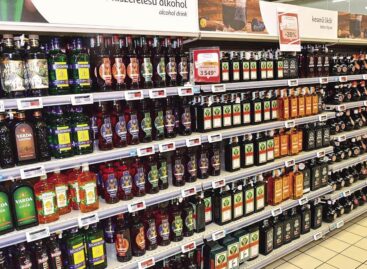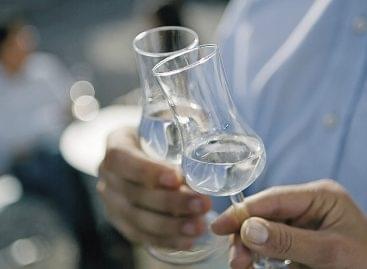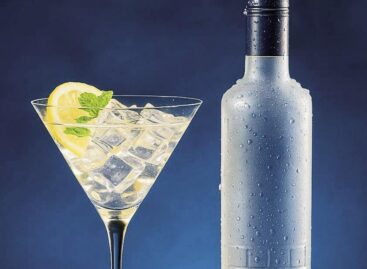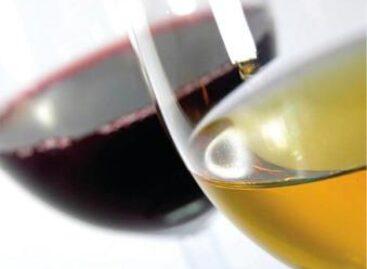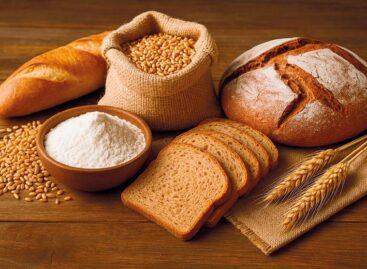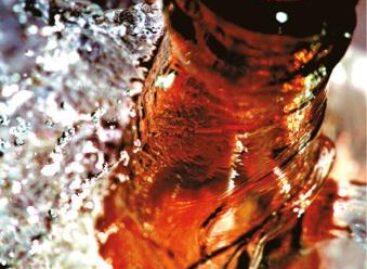Losing shelf space
This article is available for reading in Trade magazin 2025/2-3.

Krisztina Páll
brand manager
Dunapro
In 2024 the Hungarian pálinka market was characterised by different challenges, points out Krisztina Páll, brand manager of Dunapro. Inflation and rising production costs have had an influence on purchasing power. Climate change has been causing severe damage to fruit production for years with the March frosts, even if last year this was less significant. Lots of rain and little sunshine in 2024 resulted in mediocre fruit quality, making the job of pálinka distillers more difficult.
Handicapped in many ways

Balázs Gátvölgyi
head of sales
Panyolai Szilvórium
In 2024 the pálinka market was battling with lots of hardships, argues Balázs Gátvölgyi, head of sales at Panyolai Szilvórium Zrt., because young people prefer drinks that are easy to enjoy in long drink form. Commercial sales of pálinka are falling, the HoReCa channel is shrinking and the decline in event sales is also causing losses. In the retail channel the company’s sales increased in both volume and value if compared to previous years.

Péter Bárány
owner
Grand Spirit
Péter Bárány, the owner of Grand Spirit tells our magazine that the pálinka market stagnated over the past year, which is basically a good performance in an otherwise contracting market.
Prices (fruit, packaging, labour costs and taxes) are at an unprecedented height. In shops the shelf space for pálinkas is only a half or a quarter of the size it used to be 2-3 years ago.
How can they stay on their feet?

László Nagy
CEO
Kunság-Szesz
According to László Nagy, the CEO of Kunság-Szesz Zrt., 2024 was the year of stabilisation in the Hungarian pálinka market. Consumption habits remained relatively unchanged, but the impact of inflation on demand is still being felt. A slow but steady rise in demand for premium and super-premium products can be observed. In 2024 the key to success was the ability of distilleries to combine quality and traditions with modern distribution channels and effective communication.

Sándor Békési
sales manager
Békési Pálinka
Sándor Békési, sales manager of Békési Pálinka Zrt. tells Trade magazin that the introduction of the DRS system has put a new burden on distilleries. Raw material purchasing prices didn’t drop in spite of the relatively good fruit harvest, so Békési Pálinka had to increase the prices of products a little.
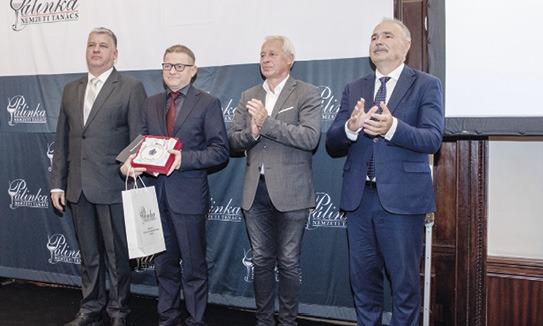
Brill Pálinkaház was awarded the Best Pálinka of Hungary award at the 2024 National Pálinka and Pomace Pálinka Competition
Shrinking demand, improving quality
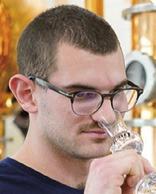
Dániel Szanka
master distiller
Gong Pálinka
Daniel Szanka, master distiller of Gong Pálinka talks to our magazine about the contraction they have seen in the pálinka market last year, as lower alcohol and other types of drinks became more popular. The master distiller believes that the overall quality of pálinkas is slowly but noticeably improving and consumers notice this.

Tibor Eck
owner
Johanna
Tibor Eck, owner of Johanna Kft., (they produce Gusto pálinka) informs that from the third quarter of 2024 they began to introduce several innovations, both at the company and in the market. They didn’t increase prices, but developed a new marketing strategy that will be particularly visible in the online space.
Price limits
Krisztina Páll opines that consumers are usually willing to pay HUF 8,000-12,000 for a 0.5-litre bottle of premium pálinka in grocery stores, and when buying mid-range products they tend to spend HUF 5,000-8,000. In restaurants the price of a 4cl serving ranges from HUF 1,500 to 3,500 forints. Balázs Gátvölgyi believes quality pálinka is a premium spirit made from real fruit, and it is a Hungaricum product as well, so it would be important for distilleries to explain to young people that pálinka is a premium drink representing traditional Hungarian values, and is one of the pillars of our culinary culture. Péter Bárány’s experience is that the majority of distilleries have switched to the 0.35-litre product size, as consumers can purchase these for HUF 6,000-7,000.
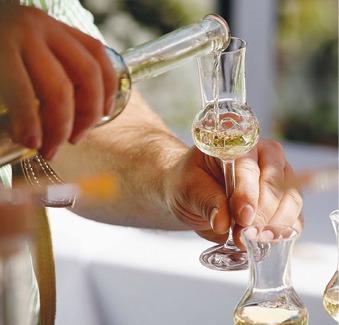
In restaurants the price of a 4cl serving ranges from HUF 1,500 to 5000 forints.
Ways to go and ways out of the slump
László Nagy states that the image of good pálinka is stronger than ever, but more education is needed to help consumers better understand its values and to distinguish it from commercial spirits. Sándor Békési thinks the image of pálinka needs some improvement and a national, state-funded campaign could help a lot. Dániel Szanka explains that their main distribution channel is the HoReCa sector, and their products are usually sold by bars and restaurants for HUF 2,500 a glass. Tibor Eck is convinced that as the popularity of gin and vodka is growing, the company can’t avoid making these types of drinks too. //
Against the wind
Our magazine asked László Mihályi, president of the National Council of Pálinka (PNT) about the problems of the pálinka category.
What was the pálinka category like in 2024?

László Mihályi
president
National Council of Pálinka
In 2024 the sector was characterised by stagnation or a slow recession. Surging inflation in 2023 hit distilleries really hard, as their production costs increased massively, but they could not compensate for this in the transfer prices, as a 20-30% price rise wouldn’t have been tolerated by the market.
Was the fruit harvest satisfactory?
Last year was certainly better than 2023 in fruit production, but prices continued to climb. Fruit quality has been variable, but the distilleries are aware of this, so they are trying to establish a long-term and good relationship with suppliers, because this way they can most probably purchase quality fruit.
What legislative changes occurred during the year?
On 1 July 2024 the DRS system was introduced and this puts not only a financial but also an administrative burden on companies. It is needless to say we agree with the principle of collection, but the costs are high. Plus in Hungary the excise duty is one of the highest in the region.
Has the overall quality of pálinkas changed in the last 2-3 years?
PNT organises the National Pálinka and Grape Marc Pálinka Competition every year, and this is an excellent opportunity to judge the quality of domestic pálinkas. I am pleased to report that there is continuous improvement in the category. The event isn’t only a competition, but also the most important meeting place for the profession, where the best commercial distilleries compare their products. PNT’s annual Pálinka Book is a compilation of the results of the commercial breweries that have participated in the country’s No.1 pálinka competition.
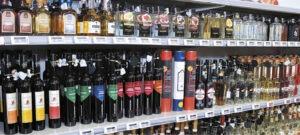
Retail turnover of pálinka is decreasing, shrinking of the HoReCa channel and the decline in event sales are also causing losses
How much are consumers willing to pay for pálinka today?
There is a layer of consumers who are committed to drinking quality pálinka and pay HUF 12,000-16,000 for a 0.5-litre 40% product, but the majority of buyers can’t afford this price. Prices in restaurants vary widely, from HUF 1,400 to 5,000 for 4cl.
Some distilleries manufacture other types of spirits, but most of them are still not following this path. The problem is that the gin, vodka and liqueur segments are even more competitive because of the many imported products.
How would you use substantial financial support from the state?
We should change the law in a way that the National Tax and Customs Administration (NAV) would control the production and use of private distillates in full, so that unfair competition from illegally marketed pálinkas would be eliminated. This doesn’t require major budgetary resources, it is simply a decision to be made. //
Related news
Drinks for the young and those young at heart
🎧 Hallgasd a cikket: Lejátszás Szünet Folytatás Leállítás Nyelv: Auto…
Read more >Family distilleries in the face of market pressure – the everyday life of a pálinka distillery in Zala
🎧 Hallgasd a cikket: Lejátszás Szünet Folytatás Leállítás Nyelv: Auto…
Read more >Vodka – the new faces of colourless
🎧 Hallgasd a cikket: Lejátszás Szünet Folytatás Leállítás Nyelv: Auto…
Read more >Related news
Layers of problems
🎧 Hallgasd a cikket: Lejátszás Szünet Folytatás Leállítás Nyelv: Auto…
Read more >Replanning for export markets
🎧 Hallgasd a cikket: Lejátszás Szünet Folytatás Leállítás Nyelv: Auto…
Read more >
